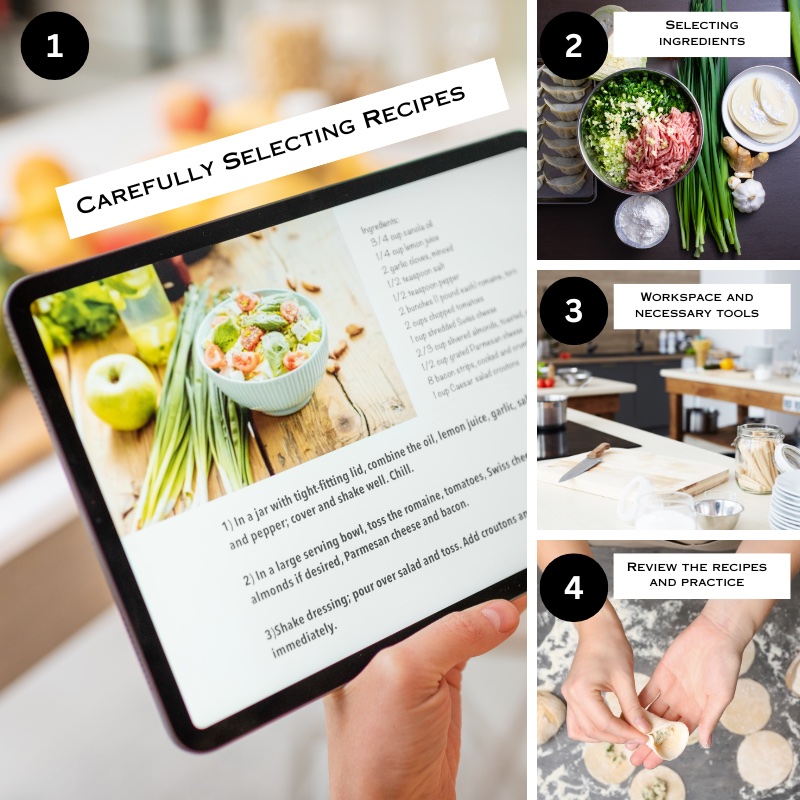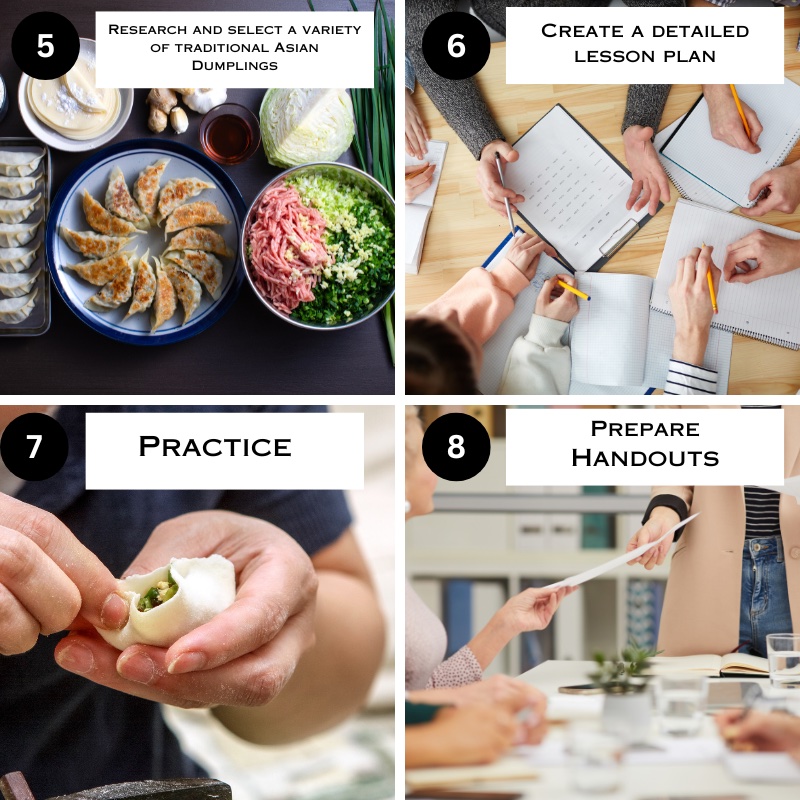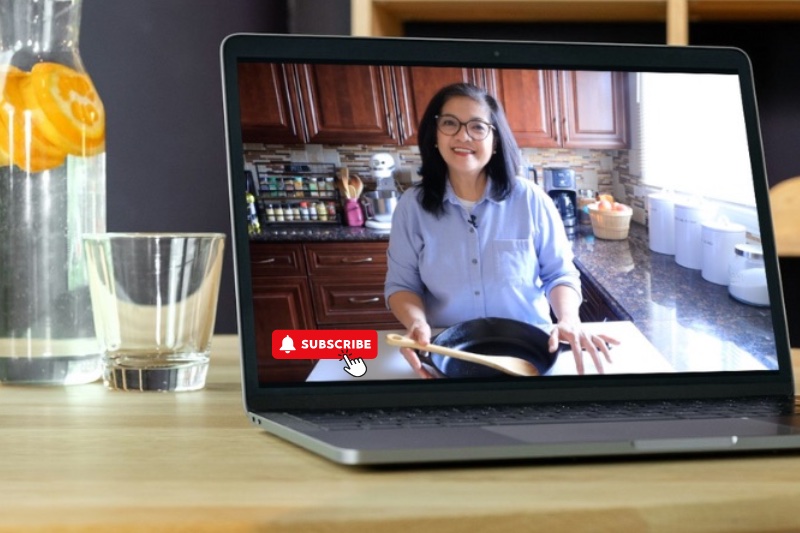Guide To Teaching A Cooking Class

Guide To Teaching A Cooking Class helps create a detailed lesson plan outlining the cooking process step by step. Including any important tips or techniques to share with the students. Embarking on a culinary adventure means different things to different people. For many, it represents an exciting journey of exploration and discovery through food. It is also a way to connect with others and learn about different traditions and ways of life. Savor the world’s diverse and delicious taste. It’s a sensory experience that can be both rewarding and enriching, leaving lasting memories and a deeper appreciation for the art of cooking and eating.
.
.
A Helpful Guide To Teaching A Cooking Class
.


.
Preparing for a cooking class involves several steps to ensure a successful and enjoyable experience for both you and your students.
.
1. BEGIN BY CAREFULLY SELECTING THE RECIPES YOU WILL TEACH. Take into consideration the complexity of the dishes and the skill level of your participants. Take some time to read through the recipes, understand the ingredients required, and familiarize yourself with any cooking techniques that may be new to you.
2. MAKE A DETAILED SHOPPING LIST OF ALL THE INGREDIENTS YOU WILL NEED. Ensure you have everything on hand before the class begins. This will help you avoid any last-minute trips to the store and allow you to focus on learning and enjoying the cooking process.
3. SET UP YOUR WORKSPACE WITH ALL THE NECESSARY TOOLS AND EQUIPMENT. Such as cutting boards, knives, pots, and pans. Organize your ingredients in a clear and accessible manner to facilitate easy access during the class. Consider any special dietary restrictions or allergies your students may have, and make appropriate accommodations in your recipes.
4. TAKE SOME TIME TO REVIEW THE RECIPES AND PRACTICE ANY TECHNIQUES YOU MAY NEED TO DEMONSTRATE. This will help you feel more confident and prepared when teaching the class.
5. IF YOU DECIDE TO TEACH SOME ASIAN CUISINE, FOR EXAMPLE, A DUMPLING CLASS. You would research and select a variety of traditional Asian dumpling recipes. From Chinese, Japanese, Korean, or Thai, to provide a well-rounded culinary experience.
6. CREATE A DETAILED LESSON PLAN OUTLINING THE COOKING PROCESS STEP BY STEP. Include any important tips or techniques to share with the students.
7. THE INSTRUCTOR NEEDS TO PRACTICE MAKING THE DUMPLINGS THEMSELVES BEFOREHAND. This ensures they can demonstrate the process smoothly and answer any questions that may arise during the class.
8. PREPARE HANDOUTS OR RECIPE CARDS FOR THE STUDENTS TO TAKE HOME. This will allow them to create the dishes on their own.
9. COME TO THE CLASS WITH AN OPEN MIND AND A POSITIVE ATTITUDE. Cooking can be a fun and creative activity, so be prepared to experiment, ask questions, and most importantly, have fun!
.
How To Start A Business Teaching A cooking Class
.

.
To start a business teaching a cooking class, you can contact local community centers, libraries, culinary schools, restaurants, and even grocery stores. Inquire about renting space or partnering with them to host your classes.
1. COMMUNITY CENTERS: They often have facilities available for classes and may even help with marketing to their members.
2. LIBRARIES: Sometimes, they offer community programs and may welcome the idea of a cooking class.
3. CULINARY SCHOOLS: Could be open to collaborations or may have space available for rent.
4. RESTAURANTS: Some restaurants allow you to use their kitchen during off-peak hours or host your classes in their dining area. Grocery stores sometimes have demo kitchens where they host events, and they may be interested in having you teach a cooking class to their customers.
Additionally, You can reach out to local event spaces, churches, schools, or even online platforms like Meetup or Eventbrite to promote and host your cooking classes. Networking with other local business owners, posting on social media, creating a website, or distributing flyers in your community can also help attract potential students to your classes. Building relationships with local food bloggers, influencers, or newspapers can help generate buzz and attract more attendees. By being proactive and creative in your search for community places to host your classes, you can increase your chances of finding the perfect location to kickstart your teaching business.
NOTE: It depends on the area you teach but it’s best to check with State Food Sanitation. You can obtain a certification in Illinois through Foodservice Manager Certification Certification.
.
5 BeneFits OF Attending A Cooking Class To Start Your Business
.
Taking a cooking class to start a business and teaching others can offer numerous benefits.
1. It enhances your culinary skills and knowledge, allowing you to confidently teach other various cooking techniques and recipes.
2. Attending a cooking class can help you network with other food enthusiasts, leading to partnerships, collaborations, or mentorship opportunities that can support your business growth.
3. It can inspire creativity and innovation in your teaching style, as you learn new dishes, presentation techniques, and cultural influences that you can incorporate into your own classes.
4. It can also boost your confidence in the kitchen and in teaching others, as you practice hands-on cooking under the guidance of experienced instructors.
5. Taking a cooking class can provide valuable feedback from instructors and peers, helping you refine your teaching methods, class content, and overall business strategy to better meet the needs and expectations of your future students.
.
Check out Lean Bellas Kitchen cooking classes, online or in-person.
My Videos
.
.
Get A Week Free Of Meal-Prepping REcipes with A Grocery List
.
.



